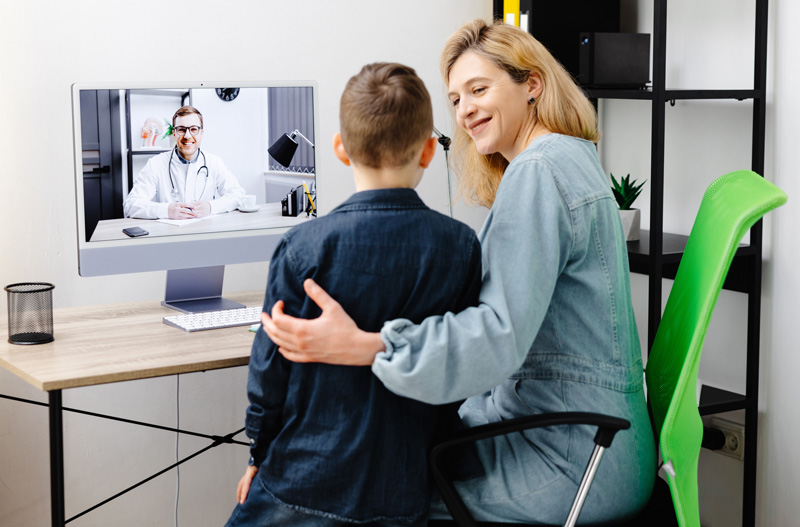Since the pandemic, many of us have become more comfortable with telehealth. The virtual visit evolution has helped many, including children with autism spectrum disorder (ASD) and their families, who can take advantage of the benefits that telehealth affords. For children with ASD, telehealth represents positive and effective interactions with medical providers. Such interactions occur in the familiar and comforting environment of their own homes, reducing the anxiety that can sometimes accompany in-person medical appointments for children with ASD. Telehealth also allows for greater flexibility in scheduling appointments, lowering stress for parents by making it easier to access necessary healthcare services with less disruption of their daily routines.

At Catalight, one of the largest behavioral health networks in the United States with more than 14,000 practitioners serving 17,000 families each day, we’ve moved from doing occasional remote interactions to having daily virtual interactions with children with ASD, their families, medical providers, allied health providers, and teachers.
In conducting telehealth visits over the last four years, here is what we’ve learned about virtual interaction with a child who has been diagnosed with ASD. Here are some telehealth tips for providers:
Child’s Support Needs
Our first telehealth tip for providers is determining how much support a child needs to be able to interact with you remotely. Many children with ASD also have a co-occurring intellectual disability or ADHD. If the child’s disability is severe, it may not be possible to interact directly with the child, but with the help of a parent or caregiver, you can often observe the child’s behavior. Asking the parent to interact with the child differently can be useful to see how a child is doing. For example, you could ask: “Let’s see if he will respond to you when you call his name.”
Getting a Child’s Attention
It can be difficult to get any child’s attention remotely. It may be particularly challenging for a child with ASD who may not engage in joint attention. Here are some telehealth tips for providers to try:
- Be animated! Use big expressions and hand movements, even toys, stuffed animals, and finger puppets.
- Try changing your virtual background to something that could catch the child’s attention.
- Ask the parent/caregiver to use a toy or favorite object to bring the child’s attention to the screen.
- Try singing a song. Some of our clinicians have “welcome songs” they use at the beginning of an interaction.
Eye Contact Is Not Necessary
One of the peculiarities of telehealth is that eye contact is contrived. Making eye contact or being able to tell if the child is making eye contact is very difficult virtually. For a child to look like they have eye contact with you, they have to look at the camera, meaning they are not looking at your face on their screen. If you need to know if the child will make eye contact, ask the person with the child to see if the child will make eye contact with them. Generally, when interacting with a child remotely, the best advice is not to worry about eye contact.
Physical Environment
Creating an optimal physical environment for the telehealth visit is important. It can be very difficult to get any child to attend to the screen, answer questions, or follow instructions when there are distractions on their side of the screen. Asking the parent to minimize sensory stimulation and distractions is helpful. Having the child in a quiet room without their smartphone/tablet or other visual stimuli is ideal. This means not having any other screens visible in the room and not having the child near a window facing a distraction, like a busy street.
In summary, telehealth can improve access for children with ASD and their families. Accommodating a child with ASD in the virtual environment can also improve your understanding of the child and his or her needs. As telehealth continues to evolve and become more widely accepted, it holds the potential to greatly improve the wellbeing and overall quality of life for children with ASD and their families by providing convenient, high-quality access to essential medical care and support. As a very early adopter of telehealth, we’ve seen it as a silver lining to the pandemic since observing firsthand how effective it can be for children and their families.
Lindsey Sneed, PhD, BCBA-D, is Vice President of Clinical Excellence, and Li Ern Chen, MD, MS, FAAP, is Chief Population Health Officer at Catalight.







